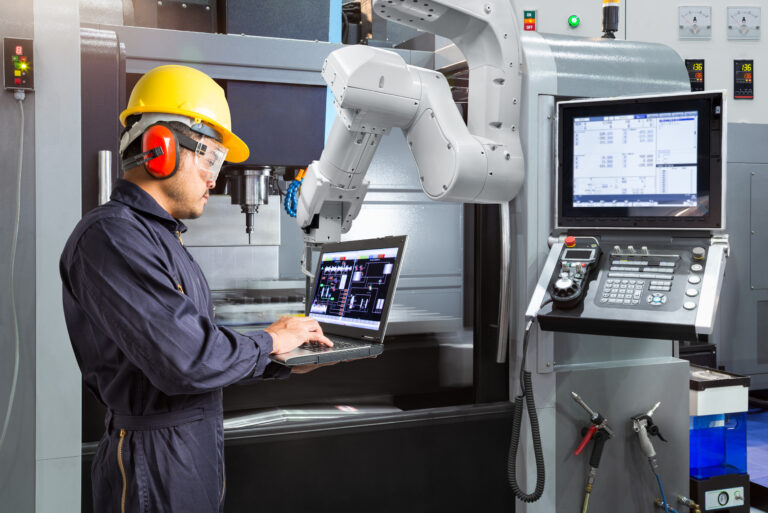Collaborative robots are a major trend in the automation market, projected to grow by over 40 percent to $7,972 million by 2026. Does that make them the right automation solution for your business? Here are the things we urge manufacturers and industrial automation users to think about.
- You need a plan. It probably won’t surprise you to hear that we are advocates of manufacturing and industrial automation; however, we don’t recommend buying any type of automation equipment without a specific application in mind. Yes, cobots are flexible and can be used for a range of tasks, even switching from one job/tool to another regularly, but without a plan you won’t reap the benefits.
- Their value to your operations depends on a few things. There are plenty of ways to deploy a cobot (or group of cobots) in manufacturing, in warehouses, and other industrial settings to save time, assist workers, and boost productivity. But not all tasks are equally well-suited for a cobot. For example, some, but not all, machine tending can be done well by a cobot. To determine if a cobot is the right fit, consider the specific work environment, tooling available, and goals for the equipment.
- Cobots are not categorically job stealers. In many instances, jobs are not lost but they are changed. Changes workers can anticipate include simple programming, managing the flow of components to maximize machine uptime, troubleshooting, overseeing a group of robots’ activities, and a shift away from doing the manual work themselves. Workers can also be redistributed more effectively. For example, by using a cobot for a repetitive manual task you can then reassign those employees to more specialized or detailed work that can’t be automated easily.
- They boost flexibility and adaptability in changing times. Historically, industrial automation was fixed: a robot was built for a single task. A cobot, in contrast, can be redeployed for a range of jobs over and over. It’s the same “cross training” idea that lets employees temporarily fill in for each other to maintain productivity. You can swap tooling, mount it on a cart to move around the shop floor, easily reprogram on the fly with hand-guiding, pivot to produce new products fast, and adjust to workforce shortages.
- Return on Investment (ROI) can be very quick. The biggest factor in ROI with any type of automation is maximizing machine uptime. Cobots have several advantages toward that end: they’re compact, easy to unpack and set up, quick and simple to program, user-friendly, and can switch between tasks. They’re also less expensive than traditional robotics in certain applications and bring several intangible benefits to your business that contribute to the ROI timeline. All of this makes for a payback period of months, not years. Explore ROI Factors With Our Calculator.
- Cobots impact your workforce and company culture. As we said above, the nature of some work will change. Cobots and automation can also expand your workforce by providing job opportunities for those with limited mobility or disabilities, and helping aging workers stay on the job thanks to improved ergonomics or robot-assisted tasks. To make sure employees stay current with the technology and transition to these new jobs, businesses must commit to providing reskilling and ongoing training opportunities.
- They can be a low-barrier entry point to automation. Companies often have an interest in exploring automation, but are not sure where or how to start. In other cases, the manufacturing team has a plan but is unsure if management will be willing to invest in an extensive automation system. User-friendly cobots can be a great way to test out certain tasks on a small scale for an affordable price. Once decision makers, operators, engineers, and IT staff see how a cobot can be used to boost efficiency, it becomes easier to find even more uses and the transition seems less daunting.
There are many things to think about when you’re considering cobots (or robots or other types of automation equipment) for your facility. The more you learn about how to plan for and implement them, the better the decisions you’ll make. We think an informed customer has a realistic understanding of where a cobot is well-suited and where a different solution might work better. If you’re ready to learn even more, please get in touch with us.



